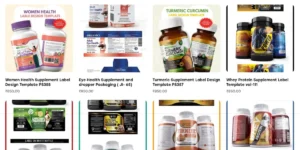Packaging plays a crucial role in protecting products, ensuring safety, and communicating essential information to consumers. In the USA, several federal and state laws regulate packaging standards to ensure consumer safety, environmental sustainability, and fair trade practices. This guide covers the key legal requirements for packaging in the USA, helping businesses stay compliant and avoid legal issues.
1. Key Federal Regulations for Packaging in the USA
Several federal agencies oversee packaging regulations in the USA, including the FDA, FTC, and EPA. Here’s a breakdown of the main legal requirements businesses must follow:
A. Fair Packaging and Labeling Act (FPLA)
- Enforced by the Federal Trade Commission (FTC) and Food and Drug Administration (FDA).
- Ensures that packaging provides accurate and clear product information.
- Requires mandatory labeling of product quantity, identity, and manufacturer details.
- Prevents deceptive or misleading packaging claims.
B. Food and Drug Administration (FDA) Regulations
- Governs packaging for food, beverages, drugs, cosmetics, and medical devices.
- Requires packaging materials to be food-safe and non-toxic (no harmful chemical migration).
- Ensures tamper-evident packaging for certain products like over-the-counter (OTC) drugs.
- Mandates nutrition labeling and allergen disclosure for food products.
C. Poison Prevention Packaging Act (PPPA)
- Overseen by the Consumer Product Safety Commission (CPSC).
- Requires child-resistant packaging for hazardous household products, including medications, pesticides, and chemicals.
- Packaging must be difficult for children under 5 to open but accessible for adults.
D. Environmental Protection Agency (EPA) Regulations
- Ensures packaging materials comply with environmental safety standards.
- Governs the use of recyclable, biodegradable, or non-toxic materials.
- Regulates packaging waste disposal, especially for hazardous materials.
E. U.S. Department of Agriculture (USDA) Regulations
- Governs organic food labeling and packaging.
- Requires “Certified Organic” products to meet specific standards in materials and labeling.
2. Labeling & Printing Requirements for Packaging
Accurate and legally compliant labeling is crucial for all products sold in the U.S. Packaging labels must include:
✅ Product Identity – Clearly state what the product is.
✅ Net Quantity Statement – Specify the weight, volume, or numerical count.
✅ Manufacturer Information – Include company name, address, and contact details.
✅ Ingredient List (for food & cosmetics) – List ingredients in descending order by weight.
✅ Nutrition Facts Label (for food products) – Follow FDA’s standardized format.
✅ Allergen Information (if applicable) – Highlight common allergens like nuts, dairy, soy, etc.
✅ Usage Instructions & Warnings – Include any necessary safety or usage guidelines.
Additional Labeling Requirements for Specific Products:
- Food & Beverages → Must comply with the Nutrition Labeling and Education Act (NLEA).
- Electronics → Require the FCC compliance label.
- Pharmaceuticals → Follow FDA-approved drug facts labeling.
- Pesticides & Chemicals → Must include hazard symbols per the EPA & OSHA regulations.
3. Sustainability & Eco-Friendly Packaging Laws
The U.S. government is actively pushing for sustainable packaging through various federal and state regulations.
A. Extended Producer Responsibility (EPR) Laws
- Some states (e.g., California, Oregon, Maine) enforce EPR programs requiring companies to reduce packaging waste and contribute to recycling programs.
B. Single-Use Plastic Bans
- Many states (e.g., New York, California) restrict or ban certain single-use plastics, such as plastic bags, straws, and polystyrene containers.
C. Green Marketing Guidelines (FTC)
- Prevents companies from making false environmental claims (greenwashing).
- If a product is labeled as “recyclable” or “biodegradable”, it must meet strict standards.
4. Hazardous Material Packaging Regulations
If your product involves chemicals, flammable substances, or other hazardous materials, you must comply with the Hazardous Materials Transportation Act (HMTA) and OSHA’s Hazard Communication Standard (HCS).
Key Requirements:
✔ UN/DOT-Approved Packaging for hazardous shipments.
✔ Hazard Symbols & Warnings (per GHS labeling standards).
✔ Leak-Proof, Impact-Resistant Packaging.
5. State-Specific Packaging Regulations
In addition to federal laws, some U.S. states have stricter packaging regulations:
| State | Key Regulations |
| California (CA) | Prop 65 – Requires warning labels for packaging containing harmful chemicals. |
| New York (NY) | Plastic Bag Ban – Restricts single-use plastic packaging. |
| Maine (ME) | EPR for Packaging – Businesses must pay for recycling their packaging waste. |
| Washington (WA) | Ban on PFAS (forever chemicals) in food packaging. |
6. Packaging Compliance Checklist for U.S. Businesses
To ensure your packaging is legally compliant in the USA, follow this checklist:
✅ Confirm FDA, FTC, EPA, and USDA Compliance (based on your product category).
✅ Use Non-Toxic, Food-Safe Materials (for food, cosmetics, and medical products).
✅ Label Products Correctly (including net weight, ingredients, and warnings).
✅ Ensure Child-Resistant Packaging (for hazardous materials).
✅ Follow State-Specific Laws (like California’s Prop 65 or EPR laws).
✅ Use Sustainable Packaging (to comply with growing eco-friendly regulations).
Conclusion: Ensuring Legal Compliance in Packaging
Navigating the legal requirements for packaging in the USA can be complex, but compliance is essential to avoid fines, lawsuits, or product recalls. Understanding and implementing the federal, state, and environmental regulations will help businesses stay legally compliant while maintaining consumer trust and sustainability goals.
If you’re planning to launch a new product, consulting a packaging compliance expert or regulatory attorney can help ensure that your packaging meets all legal standards in the U.S. market.
Can You Attract Investors Without Losing Control of Your Startup?








7 Responses
I think the admin of this website is genuinely working hard in support of his site, for the
reason that here every material is quality based data.
Ahaa, its good dialogue regarding this paragraph at this place at this webpage, I have read all that, so at this time me also commenting here.
Here is my web-site :: youtube mp3